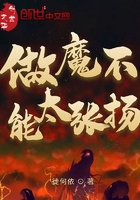The war of Granada, however poets may embroider it with the flowers of their fancy, was certainly one of the sternest of those iron conflicts which have been celebrated under the name of "holy wars." The worthy Fray Antonio Agapida dwells with unsated delight upon the succession of rugged mountain-enterprises, bloody battles, and merciless sackings and ravages which characterized it; yet we find him on one occasion pausing in the full career of victory over the infidels to detail a stately pageant of the Catholic sovereigns.
Immediately on the capture of Loxa, Ferdinand had written to Isabella, soliciting her presence at the camp that he might consult with her as to the disposition of their newly-acquired territories.
It was in the early part of June that the queen departed from Codova with the princess Isabella and numerous ladies of her court. She had a glorious attendance of cavaliers and pages, with many guards and domestics. There were forty mules for the use of the queen, the princess, and their train.
As this courtly cavalcade approached the Rock of the Lovers on the banks of the river Yeguas, they beheld a splendid train of knights advancing to meet them. It was headed by that accomplished cavalier the marques-duke de Cadiz, accompanied by the adelantado of Andalusia. He had left the camp the day after the capture of Illora, and advanced thus far to receive the queen and escort her over the borders. The queen received the marques with distinguished honor, for he was esteemed the mirror of chivalry. His actions in this war had become the theme of every tongue, and many hesitated not to compare him in prowess with the immortal Cid.*
*Cura de los Palacios.
Thus gallantly attended, the queen entered the vanquished frontier of Granada, journeying securely along the pleasant banks of the Xenil, so lately subject to the scourings of the Moors. She stopped at Loxa, where she administered aid and consolation to the wounded, distributing money among them for their support according to their rank.
The king after the capture of Illora had removed his camp before the fortress of Moclin, with an intention of besieging it. Thither the queen proceeded, still escorted through the mountain-roads by the marques of Cadiz. As Isabella drew near to the camp the duke del Infantado issued forth a league and a half to receive her, magnificently arrayed and followed by all his chivalry in glorious attire. With him came the standard of Seville, borne by the men-at-arms of that renowned city, and the prior of St. Juan with his followers. They ranged themselves in order of battle on the left of the road by which the queen was to pass.
The worthy Agapida is loyally minute in his description of the state and grandeur of the Catholic sovereigns. The queen rode a chestnut mule, seated in a magnificent saddle-chair decorated with silver gilt. The housings of the mule were of fine crimson cloth, the borders embroidered with gold, the reins and head-piece were of satin, curiously embossed with needlework of silk and wrought with golden letters. The queen wore a brial or regal skirt of velvet, under which were others of brocade; a scarlet mantle, ornamented in the Moresco fashion; and a black hat, embroidered round the crown and brim. The infanta was likewise mounted on a chestnut mule richly caparisoned: she wore a brial or skirt of black brocade and a black mantle ornamented like that of the queen.
When the royal cavalcade passed by the chivalry of the duke del Infantado, which was drawn out in battle array, the queen made a reverence to the standard of Seville and ordered it to pass to the right hand. When she approached the camp the multitude ran forth to meet her with great demonstrations of joy, for she was universally beloved by her subjects. All the battalions sallied forth in military array, bearing the various standards and banners of the camp, which were lowered in salutation as she passed.















